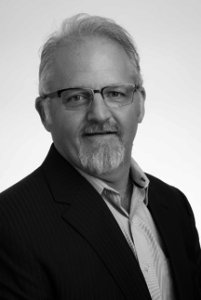More than Half of Uninsured People Eligible for Marketplace Insurance Could Pay Less for Health Plan than Individual Mandate Penalty
Things are not looking up for the uninsured. Pay less and reach out to your health insurance professionals today. Want more facts? Check out this blog article from Kaiser Family Foundation.
A new Kaiser Family Foundation analysis finds that more than half (54% or 5.9 million) of the 10.7 million people who are uninsured and eligible to purchase an Affordable Care Act marketplace plan in 2018 could pay less in premiums for health insurance than they would owe as an individual mandate tax penalty for lacking coverage.
Within that 5.8 million, about 4.5 million (42% of the total) could obtain a bronze-level plan at no cost in 2018, after taking income-related premium tax credits into account, the analysis finds.
Most people without insurance who are eligible to buy marketplace coverage qualify for subsidies in the form of tax credits to help pay premiums for marketplace plans (8.3 million out of 10.7 million). Among those eligible for premium subsidies, the analysis finds that 70 percent could pay less in premiums than what they’d owe as a tax penalty for lacking coverage, with 54 percent able to purchase a bronze plan at no cost and 16 percent contributing less to their health insurance premium than the tax penalty they owe.
Among the 2.4 million uninsured, marketplace-eligible people who do not qualify for a premium subsidy, 2 percent would be able to pay less for marketplace insurance than they’d owe for their 2018 penalty, the analysis finds.
The Affordable Care Act’s individual mandate requires that most people have health coverage or be subject to a tax penalty unless they qualify for certain exemptions. The individual mandate is still in effect, though Congress may consider repealing it as part of tax legislation.
Consumers can compare their estimated 2018 individual mandate penalty with the cost of marketplace insurance in their area with KFF’s new Individual Mandate Penalty Calculator.
The deadline for ACA open enrollment in most states is Dec. 15, 2017.
You can read the original article here.
Source:
Kaiser Family Foundation (9 November 2017). "ANALYSIS: More than Half of Uninsured People Eligible for Marketplace Insurance Could Pay Less for Health Plan than Individual Mandate Penalty" [Web blog post]. Retrieved from address https://www.kff.org/health-reform/press-release/analysis-more-than-half-of-uninsured-people-eligible-for-marketplace-insurance-could-pay-less-for-health-plan-than-individual-mandate-penalty/
Taking A Page From Pharma’s Playbook To Fight The Opioid Crisis
From Kaiser Health News, here is the latest: an interview with Dr. Mary Meengs, medical director at the Humboldt Independent Practice Association, on curbing opioid addiction through the reduction of prescription painkillers.
Dr. Mary Meengs remembers the days, a couple of decades ago, when pharmaceutical salespeople would drop into her family practice in Chicago, eager to catch a moment between patients so they could pitch her a new drug.
Now living in Humboldt County, Calif., Meengs is taking a page from the pharmaceutical industry’s playbook with an opposite goal in mind: to reduce the use of prescription painkillers.
Meengs, medical director at the Humboldt Independent Practice Association, is one of 10 California doctors and pharmacists funded by Obama-era federal grants to persuade medical colleagues in Northern California to help curb opioid addiction by altering their prescribing habits.
She committed this past summer to a two-year project consisting of occasional visits to medical providers in California’s most rural areas, where opioid deaths and prescribing rates are high.
“I view it as peer education,” Meengs said. “They don’t have to attend a lecture half an hour away. I’m doing it at [their] convenience.”
This one-on-one, personalized medical education is called “academic detailing” — lifted from the term “pharmaceutical detailing” used by industry salespeople.
Detailing is “like fighting fire with fire,” said Dr. Jerry Avorn, a Harvard Medical School professor who helped develop the concept 38 years ago. “There is some poetic justice in the fact that these programs are using the same kind of marketing approach to disseminate helpful evidence-based information as some [drug] companies were using … to disseminate less helpful and occasionally distorted information.”
Recent lawsuits have alleged that drug companies pushed painkillers too aggressively, laying the groundwork for widespread opioid addiction.
Avorn noted that detailing has also been used to persuade doctors to cut back on unnecessary antibiotics and to discourage the use of expensive Alzheimer’s disease medications that have side effects.
Kaiser Permanente, a large medical system that operates in California, as well as seven other states and Washington, D.C., has used the approach to change the opioid-prescribing methods of its doctors since at least 2013. (Kaiser Health News is not affiliated with Kaiser Permanente.)
In California, detailing is just one of the ways in which state health officials are attempting to curtail opioid addiction. The state is also expanding access to medication-assisted addiction treatment under a different, $90 million grant through the federal 21st Century Cures Act.
The total budget for the detailing project in California is less than $2 million. The state’s Department of Public Health oversees it, but the money comes from the federal Centers for Disease Control and Prevention through a program called “Prevention for States,” which provides funding for 29 states to help combat prescription drug overdoses.
The California doctors and pharmacists who conduct the detailing conversations are focusing on their peers in the three counties hardest hit by opioid addiction: Lake, Shasta and Humboldt.
They arrive armed with binders full of facts and figures from the CDC to help inform their fellow providers about easing patients off prescription painkillers, treating addiction with medication and writing more prescriptions for naloxone, a drug that reverses the toxic effects of an overdose.
“Academic detailing is a sales pitch, an evidence-based … sales pitch,” said Dr. Phillip Coffin, director of substance-use research at San Francisco’s Department of Public Health — the agency hired by the state to train the detailers.
In an earlier effort, Coffin said, his department conducted detailing sessions with 40 San Francisco doctors, who have since increased their prescriptions of naloxone elevenfold.
“One-on-one time with the providers, even if it was just three or four minutes, was hugely beneficial,” Coffin said. He noted that the discussions usually focused on specific patients, which is “way more helpful” than talking generally about prescription practices.
Meengs and her fellow detailers hope to make a dent in the magnitude of addiction in sparsely populated Humboldt County, where the opioid death rate was the second-highest in California last year — almost five times the statewide average. Thirty-three people died of opioid overdoses in Humboldt last year.
One recent afternoon, Meengs paid a visit during the lunch hour to Fortuna Family Medical Group in Fortuna, a town of about 12,000 people in Humboldt County.
“Anybody here ever known somebody, a patient, who passed away from an overdose?” Meengs asked the group — a physician, two nurses and a physician assistant — who gathered around her in the waiting room, which they had temporarily closed to patients.
“I think we all do,” replied the physician, Dr. Ruben Brinckhaus.
Brinckhaus said about half the patients at the practice have a prescription for an opioid, anti-anxiety drug or other controlled substance. Some of them had been introduced to the drugs years ago by other prescribers.

Dr. Ruben Brinckhaus says his small family practice in Fortuna, Calif., has been trying to wean patients off opiates. (Pauline Bartolone/California Healthline)
Meengs’ main goal was to discuss ways in which the Fortuna group could wean its patients off opioids. But she was not there to scold or lecture them. She asked the providers what their challenges were, so she could help them overcome them.
Meengs will keep making office calls until August 2019 in the hope that changes in the prescribing behavior of doctors will eventually help tame the addiction crisis.
“It’s a big ship to turn around,” said Meengs. “It takes time.”
Source:
Bartolone P. (14 November 2017). "Taking A Page From Pharma’s Playbook To Fight The Opioid Crisis" [Web blog post]. Retrieved from address https://khn.org/news/taking-a-page-from-pharmas-playbook-to-fight-the-opioid-crisis/
SaveSave
Data transparency, debt consolidation and ID protection lead open enrollment wish list
In the thick of open enrollment season, savvy employers and benefit advisers have eased the onslaught of information with complex benefit jargon by spreading out employee sign-up before the mad fall rush. Employee Benefit Adviser spoke with Jeffrey Faber, HUB International Midwest’s chief operating officer, to discuss how employers are urging employees to save with data transparency tools, use interactive services to learn about new benefits and to sign up for identity protection.
EBA: How is open enrollment going for you and your clients?
Faber: We’re in the middle of open enrollment season and we are trying to lock down the last-minute decisions our clients have. Predominantly our business is a renewal business.
Our large groups have made their decisions already but our smaller groups are just finding out what their renewals are from the major medical carriers. We have our hands full trying to make sense of it all. But open enrollment is the focus. This is absolutely our busiest time of year. From mid-August to Halloween, and even mid-November, it seems to be getting longer and longer every year with all the nuances our clients require.
EBA: How does this enrollment season differ from previous years? Is there confusion over the ACA’s status? Is there a greater emphasis on voluntary benefits?
Faber: On the repeal of Obamacare, a lot of those decisions have been made too late for our employers to really have to pivot and they are unaffected largely by the executive orders and the talk from Congress. Of course, there's the specter that Congress will act and make a decision in the next couple of weeks, but that impact would probably be a 2019 event instead of a 2018 event.
On the voluntary benefits side, our clients are asking for financial and holistic tools to meet the employees where they live in regard to student loans, tuition assistance and debt consolidation services. ID theft has been a big conversation point in the last three or four months and has been heightened by the Equifax breach, but it started three years ago with the Target breach. A lot of employers want to understand their role in their employee’s lives,

And for voluntary benefits, most of our customers are moving to the consumer-driven model with higher deductibles, so accident insurance, critical injury insurance, and hospitalization – those are all nice bolt-on benefits for the medical benefits they have. It almost allows the employee to self-insure their own health. And HSAs and HRAs are still popular. We see a large uptick year over year over year.
EBA: Any other trends for this year’s open enrollment?
Faber: A few years ago, we joked that overall enrollment was the HR Super Bowl. It happened once a year, it was a three hour event with a bunch of commercials and no one really talked about it a week or two later.
Our clients have asked, what can we do the other 11 months a year? We have seen an increase in requests for interactive PDFs, on-demand video, and interactive guides directing folks to microsites or apps on their phone. We introduce these in April, May or June and if the employee needs this, they don't have to go back into their memory bank and access it, they can get it online. It is that year round learning that engages the customer.
EBA: Is this because employees are bombarded with information during open enrollment?
Faber: Yes and no. There is a lot of information that is required and that is distributed this time of year and there are a lot of decision points that they have to make for themselves and the benefit of their families. We put in place decision helping tools like Jellyvision’s ALEX and some other proprietary tools, that can help employees better make decisions.
But I think it is more toward trying to be a circuit breaker in an employee's head when they are accessing healthcare. That makes them stop and check, “Is this in network, do I have to get pre-authorization? How do I check for a lower cost across the street from a benefit provider?”
These things come out of the workshops this time of year, but if you are not hitting employees where they live at the time of use, you are missing those opportunities for significant cost savings. And not on just on the employer side but the employee side especially with high-deductible plans.
EBA: Is data transparency a big push for this open enrollment season?
Faber: Yes, especially when you consider that standalone imaging facilities are three to eight times less expensive than an in-house hospital facility. Employees need to understand that they will pay 100% of that cost until they meet that deductible in that consumer-driven plan, so there is every effort being made to make sure the employee is checking those transparency tools.
At open enrolment time, we make every effort to employees in the room to ID the nearest urgent care and ER facility, to write those down on a note card and put it in the visor of their car. So, they know at the moment of crisis to know where those places are and make decisions ahead of time.
EBA: Accountants say that from January to April 15, they don't see their families. Is it the same for you during open enrollment?
Faber: (Laughs) I grew up in an accounting family and I can attest to that. It is all hands on deck but our goal is to help clients get their decisions out of the way in Q1 and Q2. We try to help them with decisions that don't require immediacy and don’t have to be made right away, like life and disability insurance, and voluntary and wellness benefits. You can make a lot of those decisions in April, May and June.
Source:
Albinus P. (30 October 2017). "Data transparency, debt consolidation and ID protection lead open enrollment wish list" [Web blog post]. Retrieved from address https://www.employeebenefitadviser.com/news/data-transparency-debt-consolidation-and-id-protection-lead-open-enrollment-wish-list-says-hub-international-midwest-coo-jeffrey-faber?feed=00000152-1387-d1cc-a5fa-7fffaf8f0000
SaveSave
SaveSaveSaveSave
5 ways to empower employees to make smart healthcare choices
As an employer, it's important to help your employees out when you can - especially when it comes to making smart healthcare choices. In this article from Employee Benefit Advisor, Anne Stowell lists five different ways to empower your employees.
As uncertainty in healthcare policy lingers, creating a benefits package with real value for both employers and employees can seem increasingly complex and difficult to achieve. Striving to provide the right care services — ones that are easy for employees to use, and designed to increase engagement in their care while being mindful of costs — is undoubtedly a tricky balancing act.
So how can employers engage to help employers offer benefits that have real and lasting value, while empowering employees to make smart care choices? Here are five tips:
1) Learn your clients’ hot buttons. Value is one of the most important factors employers consider when shopping for benefits. Rise Broadband, for example, the largest fixed wireless service provider in the U.S., has a large number of employees working in the field to service remote customers. Accessing healthcare when employees are on the road was a real challenge. Jennifer Iannapollo, the company’s director of HR, says their telehealth benefit provides employees with real value, and was the clear answer for this Colorado-based employer.

Bloomberg/file photo
2) Recognize empowerment comes with confidence. Employees won’t use what they aren’t sure of. Iannapollo also was careful to choose a telehealth platform that focused on quality. “Some people needed reassurance about who would be treating them and how they would know their medical history. We reassured them that their medical records and history are collected when they register and that the physicians are all board certified and average 20 years of experience. That provided them with peace of mind,” she says. Security practices and certifications can also add a level of comfort, and are something advisers should keep in mind in their recommendations for any product to employers.
3) Remind employees to take charge of their own healthcare destiny. A recent Teladoc survey of more than 300 employers found that a whopping 66% stated that lack of benefit awareness negatively affects employee engagement with health benefits. That’s where advisers have an opportunity to shine by emphasizing the need to communicate and educate employees not just during benefit season, but whenever/wherever their moment of need might be. “Surround sound” reminders are proven to help. One creative idea that Rise Broadband adopted was dashboard stickers that help field technicians’ keep available benefits top of mind.
4) Combat “vendor fatigue.” Employers are inundated by the staggering number of benefits options, not to mention trying to manage countless vendors that all have a piece of the benefits package puzzle. Advisers can help clear the confusion by working closely with their clients to help them source solutions that meet a broad array of needs for everything from sinus infections to behavioral health to getting second opinions.
5) Educate employers that employee engagement is a winning strategy. Advisers agree with us that technology that provides real-time information for decision-making and access to quality healthcare for employees provides real value. Reed Smith, SVP/employee benefits practice leader, CoBiz Insurance, in Denver, believes that like other disruptive innovation (think Apple and Amazon) that has transformed consumer interactions, engaged telehealth, when deployed effectively, can result in a happier, healthier and more involved employee, which means a healthier bottom line for the employer.
Source:
Stowell A. (8 November 2017). "5 ways to empower employees to make smart healthcare choices" [Web blog post]. Retrieved from address https://www.employeebenefitadviser.com/opinion/5-ways-to-empower-employees-to-make-smart-healthcare-choices
SaveSave
Employers prefer paper-based approach for open enrollment
Sure, technology is great, but can it ever live up to a face-to-face sit down? Let's take a look at the facts from Employee Benefit Advisor.
Fewer than half of businesses use technology to handle annual enrollment or manage time off, Affordable Care Act reporting or benefits changes during the year, according to a recent white paper by one of the nation’s leading ancillary benefits providers.
Citing a 2017 LIMRA report entitled “Convenient and Connected: Employers and Benefits,” Colonial Life highlighted several reasons why employers are resisting the digital age. They believe their organization isn’t big enough (32%), a technology solution is too expensive (24%), they don’t have enough staff (16%), in-person meetings are more engaging, or it’s the preference of their broker or plan administrator (tied at 15%).
In fact, Colonial Life post-enrollment surveys from 2009 to 2016 show that 98% of employees understand their benefits better through 1-to-1 benefits counseling and 95% describe the personalized attention they received as valuable.
Steven Johnson, vice president in premier markets and enrollment solutions at Colonial Life, was surprised by the prevalence of “manual and outdated ways.” However, he also understands the tendency to resist change— noting, for example, how some people still maintain landlines in spite of a reliance on smartphones for calls, text, e-mail, social media and GPS directions.

“Slow adoption of technology can be especially true in the workplace,” he says. “Heavy dependence of the fax machine at many workplaces still baffles me with so much advanced technology available to perform the job better, faster and cheaper.”
For those employers looking to add capabilities to their benefits technology programs, the report noted that LIMRA found most cited cost reduction (36%) or control of benefit data (35%). Rounding out the list was reduced staff time (32%), improved benefits communications (29%) and better employee experience (27%).
Among the features most sought after for either benefits administration systems, enrollment technology or both, LIMRA said low cost led the way (87%), followed by data security (86%), ease of use for employees (85%), it’s accessible all year (80%), employees re-enrolled annually or all insurance benefits are on the same platform (77% apiece).
Colonial Life stressed the importance of providing personalized resource materials, such as web content, e-mails and one-to-one meetings, as well as ample time for employees to make wise choices for themselves and dependents. Another recommendation was that insurance carriers make available benefits counselors to help guide employees through their decisions.
Johnson urged benefit brokers and advisers to help educate their clients on affordable enrollment technology solutions that will greatly enhance the experience for their employees while also reducing administrative burdens and challenges for employers and plan administrators.
“A trusted benefits adviser can share case study examples from companies of similar size and industry to illustrate the benefits of adopting a benefits admin solution for enrollment,” he says. In addition, he suggests that employee survey feedback can be shared to help advance the argument that “the overall experience is far better for those who’ve used technology to help them make their important benefits decisions.”
Source:
Shutan B. (13 November 2017). "Employers prefer paper-based approach for open enrollment" [Web blog post]. Retrieved from address https://www.employeebenefitadviser.com/news/employers-prefer-paper-based-approach-for-open-enrollment?brief=00000152-1443-d1cc-a5fa-7cfba3c60000
SaveSave
SaveSave
Understanding your Letter 226-J
Letter 226-J is the initial letter issued to Applicable Large Employers (ALEs) to notify them that they may be liable for an Employer Shared Responsibility Payment (ESRP). The determination of whether an ALE may be liable for an ESRP and the amount of the proposed ESRP in Letter 226-J are based on information from Forms 1094-C and 1095-C filed by the ALE and the individual income tax returns filed by the ALE’s employees.
What you need to do
- Read your letter and attachments carefully. These documents explain the ESRP process and how the information received affects the computation.
- The letter fully explains the steps to take if you agree or disagree with the proposed ESRP computation.
- Complete the response form (Form 14764) indicating your agreement or disagreement with the letter.
- If you disagree with the proposed ESRP liability, you must provide a full explanation of your disagreement and/or indicate changes needed on Form 14765 (PTC Listing). Return all documents as instructed in the letter by the response date.
- If you agree with the proposed ESRP liability, follow the instructions to sign the response form and return with full payment in the envelope provided.
You may want to
- Review the information reported on Forms 1094-C and 1095-C for the applicable year to confirm that the information filed with the IRS was accurate because the IRS uses that information to compute the ESRP.
- Keep a copy of the letter and any documents you submit.
- Contact us using the information provided in the letter if you have any questions or need additional time to respond.
- Send us a Form 2848 (Power of Attorney and Declaration of Representative) to allow someone to contact us on your behalf. Note that the Form 2848 must state specifically the year and that it is for the Section 4980H Shared Responsibility Payment.
Answers to Common Questions
Why did I receive this letter?
The IRS used the information you provided on Forms 1094/5-C and determined that you are potentially liable for an ESRP.
Where did the IRS get the information used to compute the ESRP?
The IRS used form 1094/5-C filed by the ALE and the individual income tax returns of your full-time employees to identify if they were allowed a premium tax credit.
Is this letter a bill?
No, the letter is the initial proposal of the ESRP
What do I need to do?
Review the letter and attachments carefully and complete the response form by the date provided.
What do I do if the information is wrong or I disagree?
Follow the instructions in the letter to provide corrected information for consideration by the IRS. The IRS will reply with an acknowledgement letter informing you of their final determination.
Do I have appeal rights?
Yes, the acknowledgement letter that you receive will spell out all your rights, including your right to appeal.
General Information
For more info visit ACA information center for Applicable Large Employers
Here’s an excerpt from the 226J letter, and a link to the official sample.
Source:
IRS (9 November 2017). "Understanding your Letter 226-J" [Web blog post]. Retrieved from address https://www.irs.gov/individuals/understanding-your-letter-226-j
Do I Really Need Life Insurance?
At Saxon, we care greatly about others taking responsibility for their livelihood by applying for and obtaining life insurance. If you're not quite convinced you need to speak with one of our life insurance specialists, then take a glance at this article. Life insurance can help anyone - from single millennials to adults with mouths to feed. Don't let money or excuses keep you from protecting everything you've worked so hard for.
Let’s face it. Most people put off buying life insurance for any number of reasons—if they even understand it. Take a look at this list—do any of them sound like you?
1. It’s too expensive. In the ever-burgeoning budget of a young family, things like day care and car payments and possibly student loans eat up a good chunk of the money each month, and a lot of people think that life insurance is just outside those “necessities” when money’s tight. Life insurance is often not nearly as expensive as you might think, especially when you can get a good policy for less than the cost of a daily cup of coffee at the local café. If money’s tight now, what if something happens to you? Here’s more information about the true cost of life insurance.
2. That’s that stuff for babies and old people, right? People of a certain age remember Ed McMahon telling them their grandparents couldn’t be turned down for any reason and figure that’s the target demographic for life insurance. You might have been offered a small permanent insurance policy for your newborn, attractively presented with a cherubic infant on the envelope. The truth of the matter is that these are very specific insurance products—just as there are many insurance products for adults in their working years.
3. I’m strong and healthy! You eat right, you stay active, and everyone admires how grounded and centered you are. You passed your last physical with flying colors! That’s GREAT! But you’re neither immortal nor indestructible. It’s not even that something could happen to you—though it could—so much as when you’re at your strongest and healthiest, there’s no better time to get a policy to protect your loved ones. If you fall seriously ill or suffer significant injury later, it will make it tough to get that kind of policy, if any at all.
4. I have life insurance through my job. Many people are offered life insurance as part of their employee benefit coverage –and often, it’s the first time they encounter life insurance and have no idea that a $50,000 policy, or one or two times their salary, isn’t as much as they think it is. It sounds like a lot of money (and it is!), until you figure that it has to cover some or all the expenses for your loved ones in your absence. Plus, if you leave the job, it’s typically the type of insurance that doesn’t “move on” with you.
5. I don’t have kids. Sure, kids are a big reason why some people get life insurance, but that’s not the only reason for needing protection. If there is anyone in your life who would suffer financially from your loss—your spouse or live-in partner, a sibling, even your parents—a life insurance policy goes a long way in making sure everyone’s still OK even if something happens to you.
6. Life insurance—it’s on my list … eventually. There’s no deadline on life insurance, no mandate from the government on purchasing it. Your parents may have never talked to you about its importance, and it’s certainly not the most invigorating topic for conversation. But don’t let your “eventually” turn into your loved ones’ “if only.”
Don't wait to protect your livelihood. Have a chat with a specialist at Saxon Financial today by visiting this link.
Learn about the different types of life insurance here.
You can read the original article here.
Source:
Life Happens (n.d.). "Do I Really Need Life Insurance?" [Web blog post]. Retrieved from address https://www.lifehappens.org/insurance-overview/life-insurance/who-needs-life-insurance-reasons-dont-buy/
CenterStage: Fee-Based vs Commission-Based Advisors: What You Should Know
 “After almost 30 years of working in the business, the most important question to ask,” Garry Rutledge, AIF®, a Fee Based Advisor with Saxon, explained, “is do you trust that person to make decisions in your best interest or in theirs?”
“After almost 30 years of working in the business, the most important question to ask,” Garry Rutledge, AIF®, a Fee Based Advisor with Saxon, explained, “is do you trust that person to make decisions in your best interest or in theirs?”
In this month’s CenterStage article, we sat down with Garry to get the lowdown on what to expect from both fee-based financial advisors and commission-based advisors.
When Is a Commission-Based Advisor a Better Choice than a Fee-Based Advisor?
A commission-based advisor receives compensation for transactional business, usually at the point of sale, with a small annual fee to encourage advisor engagement. A client rarely knows the commission amount until the transaction is completed.
Garry mentioned, “those who purchase investments for the long term are better off choosing a commission-based advisor, who won’t pursue the client for information and bombard you with advice.”
Also, if you are a do-it-yourselfer when it comes to investing, a commission-based advisor is a great fit for you.
When Is a Fee-Based Advisor a Better Choice than a Commission-Based Advisor?
A fee-based advisor tends to value relationship’s over transactions. This results in, typically, a more involved and hands on process, because positive results increase the value of client’s portfolio. A fee-based advisor takes a consultative approach to managing client’s assets and is more likely to offer a broader scope of advice than compared to a commission based advisor.
A fee-based advisor works for the relationship resulting in little or no bias to an investment or its sponsor, as it relates to compensation, vs a commission-based advisor who may consider the compensation when making a decision when weighing similar products.
What Are You Paying Your Financial Advisor?
There are three means of advisor compensation:
- Commission for products or transactions
- A percentage of assets an advisor manages
- A hybrid between method 1 and 2
It’s imperative to know which method your advisor utilizes. This knowledge allows you to determine if you are receiving advice commensurate with the value provided. A Commissioned advisor, after making a sale, generally has no interest in what the outcome is because they have received compensation vs a fee based advisor who must build trust with clients to maintain a meaningful relationship.
Garry very rarely utilizes the hybrid model when working with clients. However, in keeping with his philosophy of doing right by his clients, there are times when he must employ this model. Garry points out, “at times, an alternative investment that is a complimentary piece of a client’s portfolio is not available on a fee basis, in which circumstance dictates that I receive a commission. In full disclosure, my clients realize when this happens and exactly what their charge will be.”
As a means of building relationships, Garry has and is focused on sustaining the fee based practice he has built and continues to build through client referrals. Garry’s fees range from 1% to .5%, depending on the assets and complexity of a client case. With this knowledge, clients know what their expenses will be up front.
The length of his client relationships is a testament that fee based advising is successful in building a solid financial advisory firm.
In the end, the client must determine what works for them, as far as how they will compensate the advisor. If a client wants to be transactional, commission is the way to proceed; but if an ongoing relationship is a requirement, a fee-based advisor is the best path for them.
More About Garry
Garry joined Saxon in August of 2006 and his focus has been the strategic management of client assets with tax minimization and capital preservation as the foundation of his planning strategy.
Since graduating from Wright State University in 1988 with a degree in Finance, Garry has worked for two respected firms. Garry holds Series 7 & 63 securities licenses, and his Life & Health license, along with achieving the professional AIF (Accredited Independent Fiduciary) designation.
You can contact Garry via email, phone, or connect with him on LinkedIn.
These are the opinions of Garry Rutledge and not necessarily those of Cambridge; they are for informal purposes only, and should not be construed or acted upon as individualized investment advice. All investing involves risk. Depending on the types of investments, there may be varying degrees of risk. Investors should be prepared to bear loss, including total loss of principal.
Download the PDF
SaveSave
How employers can better support the caregivers in their workforces
How can you provide the best support for the caregivers in your workforce? From Employee Benefit News, this article discusses the responsibilities caregiving employees juggle, and why it's so important for employers to take those responsibilities into consideration when creating a healthy and stable work environment.
As more employees self-identify as caregivers for family members and friends, employers are starting to address the needs of workers who struggle to balance work while caring for others.
The numbers are staggering. One in six U.S. employees identify as a caregiver for a family member or friend, according to research by Family Caregiver Alliance. An AARP study found that U.S. businesses lose more than $25 billion annually in lost productivity due to absenteeism among full-time working caregivers, and that figure grows an additional $3 billion when part-time workers with caregiving duties are accounted for.
“Of today’s 40 million family caregivers, 24 million are juggling caregiving responsibilities and employment. By recognizing and supporting their needs, employers can improve productivity and foster a stable and healthy workforce,” says Nancy LeaMond, chief advocacy and engagement officer for AARP.

With that in mind, Northeast Business Group on Health and AARP have released a resource guide for employers who wish to ease the burden of the caregivers among their workforce. According to Supporting Caregivers in the Workplace: A Practical Guide for Employers, the authors recommend that employers create a corporate culture of awareness, draft workplace policies, benefits and programs, obtain the support of top executives and implement new services throughout the work force.
The guide also suggests employers offer paid sick days that can also be used for the care of a relative; in-house stress-reduction programs such as yoga, meditation; massage discounts and online or in-person coaching to assist in developing a care plan. Employers are also urged to offer digital tools to help employees manage their caregiving duties and provide legal and financial counseling for employees.
Employees who are preoccupied with the care and wellbeing of a parent, sibling or child have an impact on the workplace in both their quality of work and in potential medical claims.
“Trying to balance those responsibilities however large or small does have ramifications for the folks who are doing the caregiving,” says Candace Sherman, interim CEO of NEBGH. She says caregivers often feel lonely and isolated due to the demands placed on them and they often experience depression and anxiety when dealing with their caregiving roles.
“They're often spending their outside-of-work time providing care as opposed to socializing and oftentimes they neglect their own mental and physical well-being in favor of making sure that whomever they're caring for has what they need,” says Sherman. “Ultimately, that shows up in healthcare claims down the road.”
Fighting the stigma
By creating a culture of awareness around caregiver needs and responsibilities, employers may shake the resistance employees feel when identifying as caregivers.
“We found that there's a bit of a stigma in terms of folks raising their hand and saying ‘I'm a caregiver and I'm having some trouble,’” says Sherman. She adds that this impulse is similar to employees’ overall reluctance to admitting that they have a mental health issue.
“Employee caregivers might worry that if their colleagues know they're caring for someone, their manager will think ‘I've got this great new assignment but this person's overburdened right now,’” she says. “Or maybe they're up for a promotion and they feel they won't be considered because people know that they have other responsibilities outside of work.”
The caregiving guide recommends employers “ensure that managers at all levels are aware of the company’s policies regarding flex-time, leave policies and other benefits that caregiving employees can access, and should encourage them to openly support employees using these benefits.”
The guide also recommends that providing paid leave to these employees “might be the single most important consideration for employers when thinking about creating a caregiving-friendly workplace.”
Benefit administrators appear to be getting the message. Respondents of a July 2017 survey of benefits executives and managers from roughly 130 companies said that if they could roll out “two new policies, programs or benefits tomorrow to support caregivers, they would expand leave policies and coaching, wellness or support services designed to support caregiver well-being.”
The burden is not just on employers to act to improve the workplace for caregivers, they have to come to terms with their duties and the impact it has on their personal and work lives, says Sherman. Caregivers are slow to identify themselves as such because of cultural and societal roles that engrain our sense of family responsibilities.
“We have all been there or we’re close to people who have been there in terms of caring for someone who's ill or elderly. We are ingrained to view it as we're caring people and this is just something that we do, so people don't self-identify as caregivers,” Sherman says.
She adds, “But if you're a caregiver and you're balancing those responsibilities, they can range from checking in with a family member a couple of times a week or making a run for groceries or medications to much more intensive duties that occupy several hours a day.”
You can read the original article here.
Source:
Albinus P. (5 November 2017). "How employers can better support the caregivers in their workforces" [Web Blog Post]. Retrieved from address https://www.benefitnews.com/news/how-to-meet-the-needs-of-caregiver-employees?feed=00000152-18a5-d58e-ad5a-99fd665c0000
How to Inspire and Energize Your Workforce Every Day
In this article from the SHRM blog, Desda Moss brings up some fascinating points on how to energize your workforce, as well as provides some great examples of books and behavior. Dive in with us below.
- Listening is the highest rated inspirational behavior. We're not inspired as much when someone talks at us as we are when someone listens to us. Time spent crafting beautiful messages matters less than what happens when leaders are quiet. To be an inspiring leader, you have to listen fully, with an open mind.
- Small moments have the biggest impact. Most people recall their most inspired moments as times they were engaged in personal conversations where another person spoke authentically and focused on them. People can hold the words from an inspiring 10-minute conversation for their entire lives. Conversations create an inspirational trigger. For example, a conversation about purpose hits upon why we are at this moment in our lives and in our careers. These conversations transcend what we're doing in the here and now to reveal patterns that take us further, enhance our enjoyment, tap into our passion and spark in us the will to be in service to a larger cause.
- Identifying and vocalizing another person's potential is life-changing.People who inspire us notice and grow our potential—honestly, specifically and graciously. We are often unaware of the unique talents and value we bring. Having someone take the time to tell us is a powerful reminder and can open our minds to what's possible.
- People who inspire us are real, just like us. Contrary to common cultural myths that inspirational leaders are either charismatic iconoclasts or flawless, unflappable ideals, those who inspire us are actually relatable and down-to-earth. Truly inspirational leaders don't script their words, put on false airs or try to be perfect. They get through to us because they're authentic. To be more inspirational, you need to let any well-honed professional persona go. We connect with people on emotional terms. We want to see what they actually care about.
- Technology is killing inspiration. Distraction and distance are enemies of inspiration. One study found that just the appearance of a cellphone on the table during a conversation—even if silenced—reduces empathy. If you want to be inspiring, you need to get away from distractions, electronic or otherwise, and show up fully.










